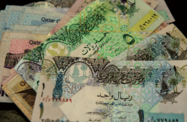Having emerged as one of the most resilient financial markets in the region in the wake of the international economic downturn of 2008-09, Qatar is working to further boost its profile. The government has made a concerted effort to expand the country’s asset management industry, in particular, to meet steadily expanding global demand for local and regional funds.
The Qatar Exchange (QE), has been enhanced by a number of regulatory changes and major new listings in recent years. In 2010 the bourse was the best-performing exchange in the GCC, posting growth of nearly 25% for the year.
The QE is working to gain “emerging market” status with MSCI, the US-based index provider, which currently labels Qatar a “frontier market”. As foreign fund managers rely on MSCI rankings to determine their asset allocations, a change would likely result in increased long-term international investment, particularly from institutions, and a concomitant reduction in volatility. While increasing the foreign ownership allowance – currently set at 25% – has also been under discussion, the exchange’s chairman, Hussain Al Abdullah, said at the end of May that the limit would remain in place for the coming year. The 25% ceiling has been a concern for MSCI, and a move to raise it would likely have a positive effect in terms of increased overseas interest.
Until fairly recently, the local asset management industry was limited in size, even at major financial institutions. In the early 2000s European multinationals tended to handle wealth management in the region remotely, from offices in London, Geneva and other major financial centres. As Gulf bourses grew in size and complexity, however, local investors began to demand local expertise, which most of the foreign firms could not deliver.
This situation began to change in late 2008. The Gulf was relatively insulated from the financial crisis compared to more developed markets in the US and the EU. In an effort to take advantage of this, a number of local banks and financial institutions set up asset management divisions, with a focus on regional capital. This in turn prompted a handful of the larger multinational firms to establish permanent subsidiaries in GCC states. Thus the local asset management segment was born.
The Qatar Financial Centre (QFC), set up by the government in 2005, has taken the lead in terms of expanding the local asset management industry. While asset management is currently the QFC’s primary focus, the centre is also working to expand the captive insurance and reinsurance segments, both of which could potentially be major economic contributors in the coming years.
Qatar is not the only country in the Gulf working to expand its asset management capacity, with both Bahrain and the UAE also trying to establish themselves in the segment. However, Qatar has a number of advantages in this regard, including its financial regulatory regime, skilled financial workforce and high levels of local liquidity, with the latter likely to continue expanding in line with country’s projected economic growth, which is expected to be among the fastest in the world.
In 2010 the Qatari economy grew by 16.3% in real terms, according to the IMF, and it is expected to grow by around 20% in 2011. On a per capita basis Qatar was the world’s wealthiest country in 2010, and the nation boasts a savings rate of around 49% – one of the highest in the GCC region, which itself has one of the highest savings rates in the world. Higher income and savings levels translate into a greater pool of assets to invest and a larger potential market for local wealth management firms.
The QFC Regulatory Authority, the country’s financial regulator, has worked to implement the best international standards, which has resulted in steadily increasing investor confidence in recent years. Finally, ongoing reforms at the bourse bode well for asset management firms.
“The recently announced creation of a short-term Qatari riyal Treasury-bill programme is an important step to creating a local currency yield curve,” said Sheikha Hanadi Nasser bin Khaled Al Thani, the founder and chairperson of Amwal, a Doha-based wealth management and financial advisory firm. “On the equity side, the QE’s initiatives to increase local listings and to adopt global best practices in settlements and rules all contribute to deepening liquidity.”
According to the Boston Consulting Group’s 11th annual global wealth report, released at the end of May, Qatar has the one of the highest concentrations of millionaire households in the world and the highest in the region, at 8.9%, ahead of neighbouring Kuwait (8.5%) and the UAE (2.6%). Given the number of wealthy local households and the double-digit GDP growth expected going forward, Qatar’s wealth management services industry looks to be perfectly placed to profit.

